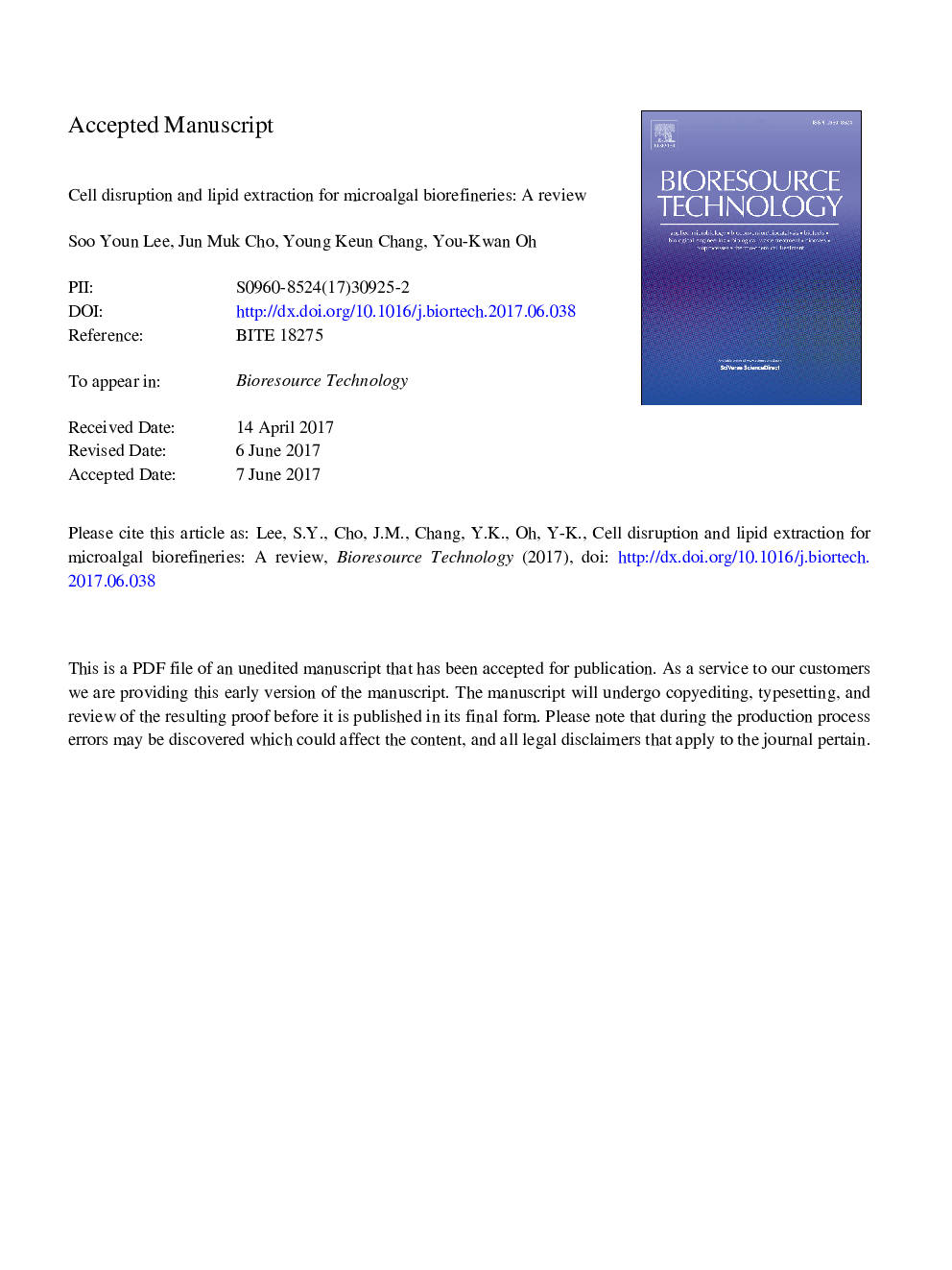| Article ID | Journal | Published Year | Pages | File Type |
|---|---|---|---|---|
| 4996970 | Bioresource Technology | 2017 | 41 Pages |
Abstract
The microalgae-based biorefinement process has attracted much attention from academic and industrial researchers attracted to its biofuel, food and nutraceutical applications. In this paper, recent developments in cell-disruption and lipid-extraction methods, focusing on four biotechnologically important microalgal species (namely, Chlamydomonas, Haematococcus, Chlorella, and Nannochloropsis spp.), are reviewed. The structural diversity and rigidity of microalgal cell walls complicate the development of efficient downstream processing methods for cell-disruption and subsequent recovery of intracellular lipid and pigment components. Various mechanical, chemical and biological cell-disruption methods are discussed in detail and compared based on microalgal species and status (wet/dried), scale, energy consumption, efficiency, solvent extraction, and synergistic combinations. The challenges and prospects of the downstream processes for the future development of eco-friendly and economical microalgal biorefineries also are outlined herein.
Related Topics
Physical Sciences and Engineering
Chemical Engineering
Process Chemistry and Technology
Authors
Soo Youn Lee, Jun Muk Cho, Yong Keun Chang, You-Kwan Oh,
